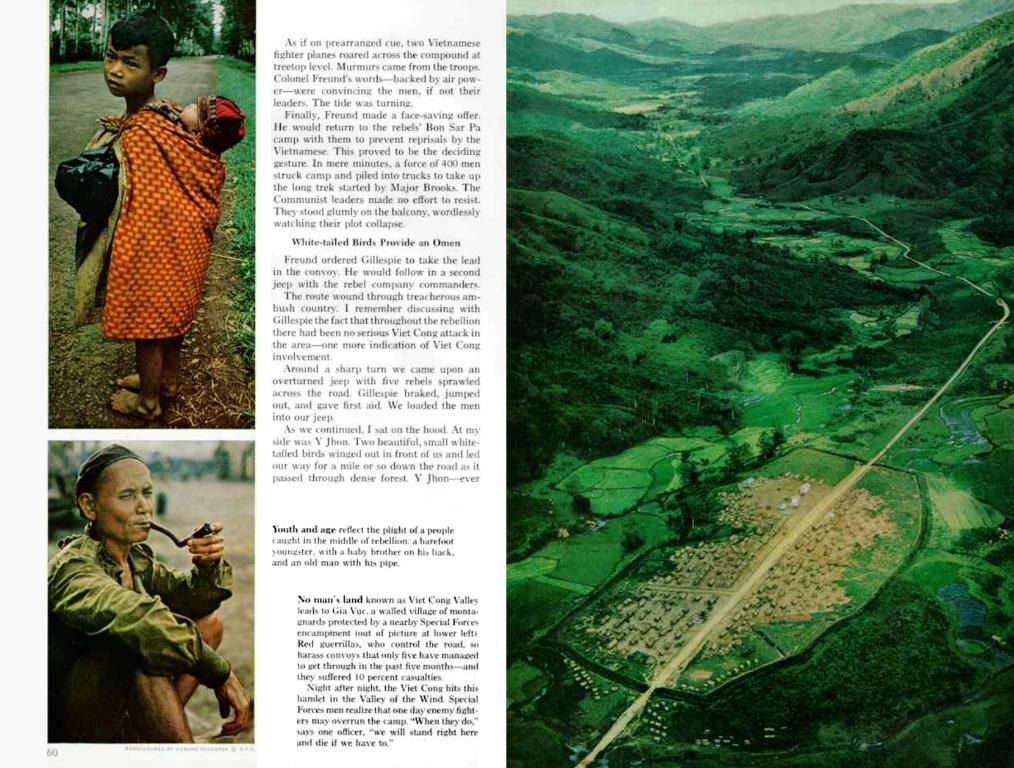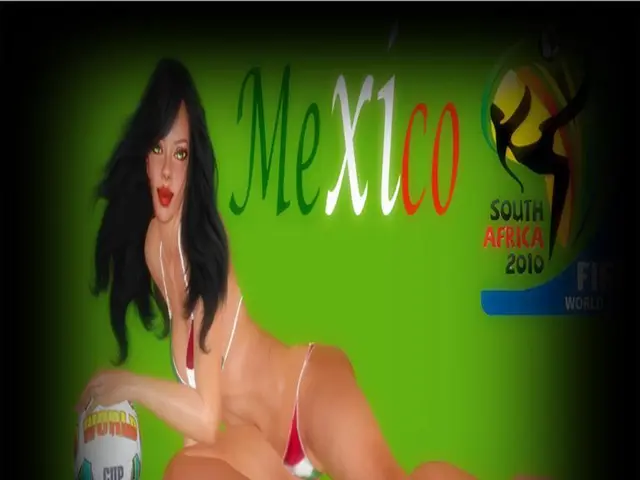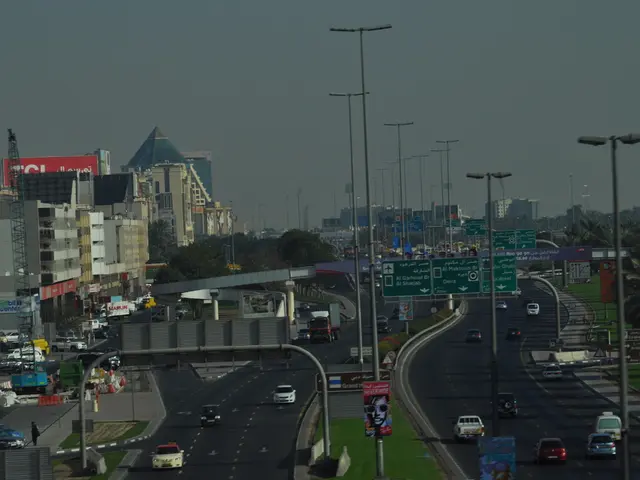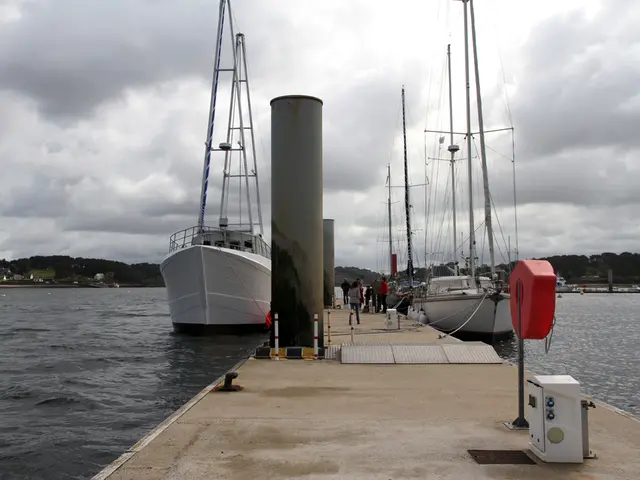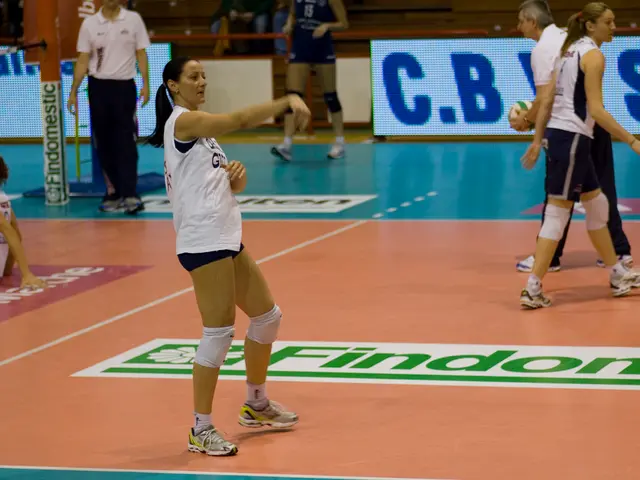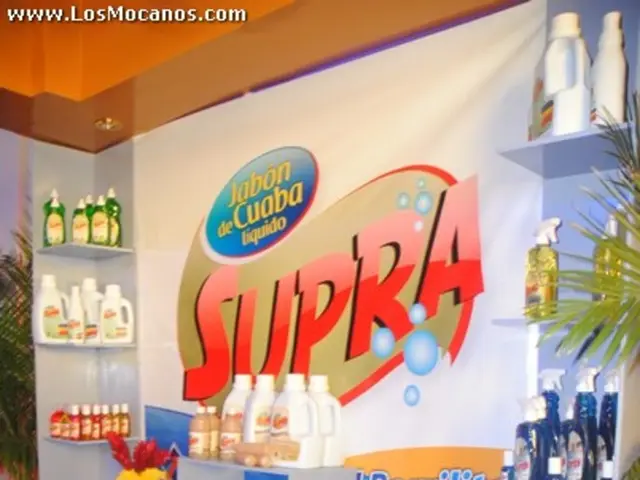A once desolate San Francisco plaza was revived by the arrival of skaters.
A New Lease on Life for United Nations Plaza: San Francisco's Skate Park Revolution
Two years ago, San Francisco's United Nations Plaza was teetering on the brink of despair. Dubbed the "saddest place in SF," the once bustling promenade central to the city was a graveyard of urban woes: paramedics saving overdose victims, vendors peddling stolen goods, and a fountain dubiously functioning as a toilet.
But post-pandemic times called for a change. Amid an international conference announcement and a struggling city, the parks department opted for a fresh remedy: a skatepark. On a sunny morning, kids in baggy pants were sliding railings, cruising over volcano-shaped embankments, and grinding on open ledges - all actions that were previously considered vandalism.
United Nations Plaza, initially dedicated in 1975 to honor the United Nations, had a lofty purpose: attracting affluent suburban shoppers. Yet, for four decades, it became a hub for crime, drug use, and vacancies, prompting reports of failure from city officials.
This skate plaza, a term preferred by the city and the skaters, stands out as a departure from the grandeur of earlier planning efforts. Redesigning the plaza didn't break the bank, costing just a few million dollars and a few months of planning, contrary to the multi-million dollar failure projects of the past.
The transformation of U.N. Plaza was not a band-aid for the city's deep-rooted problems; instead, drug dealers simply relocated to a nearby site. Yet, the success of the project lies in its understanding that offering an inviting space for specific groups leads to positive engagement.
The renaissance of U.N. Plaza blatantly defies the conventional approach to urban revitalization. The notion that architecture acts as the foundation for public spaces instead of the people who inhabit them was once ingrained in planners' thinking. However, the squalor wrought by the pandemic forced a shift in San Francisco's perspective.
According to John King, an author and former architecture critic, the city realized that creating a more laid-back space that attracts a specific group, such as skateboarders, is a more effective way to breathe life into public spaces than adhering to grand design principles aimed at pleasing the masses.
Skateboarders: a Content and Easy-to-Please Constituency
It's no homerun to say that San Francisco has a significant impact on skateboard culture. Known for housing Thrasher Magazine, the city offers skaters a diverse array of spots to perfect their tricks within the city limits. Given the proximity of hills and downtown squares, San Francisco skaters have essentially turned the city into a vast skate park.
Traditionally, city officials viewed skateboarders as nuisances, ushering them away from plazas. But post-pandemic, the city recognized that skaters might help breathe new life into the city.
"Healthy activities give people a reason to congregate for positive reasons rather than congregating for bleaker reasons," said Phil Ginsburg, general manager of the Recreation and Park Department.
Today, San Francisco boasts a collaborative relationship with the local skate community. Ginsburg consults skaters for advice when considering legal skateboarding in new spaces. In an effort to improve a barren stretch of Waller Street near Golden Gate Park, he Cambodian collared Ashley Rehfeld, a local skater and marketer in the skate industry, who requested granite benches – previously expelled from Market Street – to be reinstalled at the park. Including a resurfacing of the street, the entire renovation cost a mere $218,000, a fraction of the price of previous public works projects.
Skateboarders also serve as "watchful eyes," as urbanist Jane Jacobs described in her works. They cover large areas and watch out for one another, contributing to safe streets without the need for costly programming or events. This observant nature was crucial in creating the active atmosphere the city desired at U.N. Plaza.
In November 2022, the city welcomed the Asia-Pacific Economic Cooperation Leaders' Meeting with just a year to transform U.N. Plaza. Rather than a lengthy process filled with large budgets and numerous meetings, the eight-month project proceeded smoothly, with a single public meeting and funding drawn from existing revenue sources. To appease naysayers, the project was positioned as an experiment, allowing for potential removal if deemed unnecessary.
The Magic of U.N. Plaza
The U.N. Plaza skate park is not an epic skate complex by any means. Rather, it features several ledges and small embankments, appealing to skaters for a short, fun skate session. The most popular features remain the granite ledges that have been there for decades and a long, low curb that resembles a Costco parking lot.
Most visitors to the plaza don't come for the skateboarding. Instead, they drink coffee, take outdoor exercise classes, play table tennis, and congregate. On a recent visit, Ginsburg proudly pointed out a pedestrian walking through the plaza from a nearby building to the train station. "Ever?" he exclaimed, noting that commuters used to take a long detour around the plaza.
The Transformative Power of Skate Culture
Ocean Howell, a historian and skating enthusiast, once described skateboarders as "shock troops of gentrification." Embracing this idea, San Francisco isn't just using skateboarders to reinvigorate vacant spaces; they are consciously implementing skateboarding culture in a prominent location. The decision is now part of the urban planner's toolkit.
Skaters in San Francisco are delighted with their new hub but remain cautious of being used to displace unwanted populations. Rehfeld, a local skater and marketing strategist, encourages cities to view skateboarding as a temporary solution rather than a long-term plan for difficult spaces. She did, however, concede that the approach is beneficial for the time being.
By welcoming and embracing the skateboarding community, San Francisco has turned a troubled area into a thriving public space. The city's adaptive decision resulted in an award-winning skate park appreciated by both residents and visitors. The transformation serves as a testament to the potential for innovative, community-led solutions to modern urban problems.
- The success of United Nations Plaza's skate park has generated a positive shift in the community's perspective on business and health, with skateboarders now recognized as a crucial group for promoting healthy activities and revitalizing public spaces.
- The improved environment at United Nations Plaza, a result of the skate plaza project, also extends to other aspects, as it promotes safety by acting as a watchful community for the surrounding area, thereby reducing traffic to nearby undesirable locations.
- The innovative collaboration between the city and the skateboarding community has not only transformed United Nations Plaza into an award-winning skate park but has also made significant strides in advancing sports, environment, and community development, setting a new standard in urban planning and revitalization.
